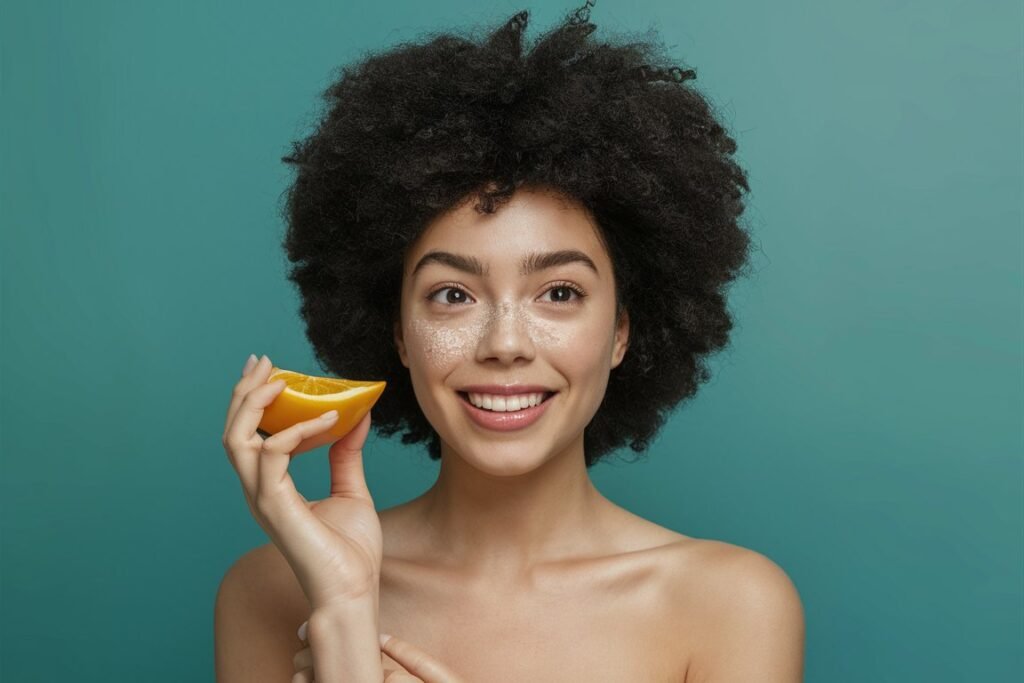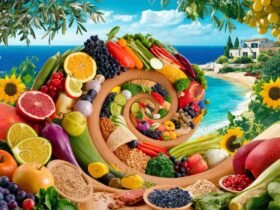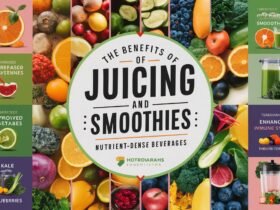Nutrition for Healthy Skin: Eating for a Radiant Complexion
Hey there, my young and curious friends of 2024! It’s your favorite nutrition adventurer, Nita Sharda, here to take you on an exciting journey into the world of healthy skin. Now, I know what you might be thinking – “Skin health? That sounds like something only grown-ups care about!” But trust me, taking care of our skin is important at every age, and the foods we eat can play a big role in keeping our skin looking and feeling its best.
Today, we’re going to put on our explorer hats and discover how nutrition can help give us a radiant, glowing complexion. But before we dive in, let me make one thing clear – this is not about putting anyone on a strict diet or making them feel bad about what they eat. It’s simply about empowering you with the knowledge and tools to make skin-friendly choices, now and in the future.
So, are you ready to uncover the secrets of healthy skin with me? Let’s go!
What Makes Skin Healthy?
First things first, let’s talk about what makes skin healthy in the first place. Our skin is our body’s largest organ, and it has a big job to do. It protects us from the outside world, helps regulate our body temperature, and even plays a role in our immune system.
To keep our skin healthy and strong, it needs a variety of nutrients, including:
- Vitamins, like vitamin A, C, and E
- Minerals, like zinc and selenium
- Healthy fats, like omega-3 fatty acids
- Antioxidants, like beta-carotene and lycopene
- Plenty of water to stay hydrated
When we eat a balanced diet that includes a variety of nutrient-rich foods, we give our skin the building blocks it needs to stay healthy and radiant.
The Link Between Diet and Skin Health
So, how exactly does what we eat affect the health of our skin? Well, it turns out that the foods we eat can have a big impact on the way our skin looks and feels.
For example, some foods can help protect our skin from damage caused by things like sun exposure, pollution, and stress. These foods are often high in antioxidants, which are like little soldiers that help fight off harmful molecules called free radicals.
Other foods can help keep our skin hydrated and supple by providing it with healthy fats and plenty of water. And some foods can even help reduce inflammation in the body, which can contribute to skin problems like acne and eczema.
On the flip side, there are also some foods that can be not-so-great for our skin. Foods that are high in sugar and unhealthy fats, for example, can contribute to inflammation and skin aging. And foods that are highly processed or contain a lot of artificial ingredients can sometimes irritate our skin or cause breakouts.
Foods for Healthy, Glowing Skin
Okay, so now that we know how important nutrition is for healthy skin, let’s talk about some specific foods that can help give us that radiant, glowing complexion we all want. Here are some of the best foods to include in your diet for healthy, beautiful skin:
1. Fruits and Vegetables
Fruits and vegetables are like the superheroes of skin-friendly eating! They’re packed with vitamins, minerals, and antioxidants that can help protect our skin from damage and keep it looking its best.
Some of the best fruits and veggies for healthy skin include:
- Berries, like strawberries, blueberries, and raspberries (high in antioxidants)
- Citrus fruits, like oranges and grapefruits (high in vitamin C)
- Leafy greens, like spinach and kale (high in vitamin A and iron)
- Sweet potatoes and carrots (high in beta-carotene)
- Tomatoes (high in lycopene)
Aim to eat a rainbow of colorful fruits and veggies every day to give your skin a wide range of nutrients.
2. Healthy Fats
Healthy fats, like those found in nuts, seeds, avocados, and fatty fish, are another important part of a skin-friendly diet. These fats help keep our skin moisturized and supple, and can also help reduce inflammation in the body.
Some great sources of healthy fats for skin health include:
- Nuts and seeds, like almonds, walnuts, and flaxseeds
- Avocados
- Fatty fish, like salmon, mackerel, and sardines
- Olive oil and other plant-based oils
Just remember to enjoy these foods in moderation, as they can be high in calories.
3. Whole Grains
Whole grains, like brown rice, quinoa, and whole wheat bread, are a great source of fiber and other important nutrients for skin health. They can help keep our digestive system running smoothly, which can in turn help keep our skin clear and healthy.
Some great whole grain options for healthy skin include:
- Oats and oatmeal
- Brown rice and wild rice
- Quinoa and other ancient grains
- Whole wheat bread and pasta
Try swapping out refined grains, like white bread and pasta, for whole grain options whenever possible.
4. Water
Last but certainly not least, staying hydrated is super important for healthy skin. When we don’t drink enough water, our skin can become dry, dull, and more prone to wrinkles and other signs of aging.
Aim to drink at least 8 cups of water a day, and more if you’re active or spending time in the sun. You can also boost your hydration by eating plenty of water-rich fruits and veggies, like watermelon, cucumbers, and zucchini.
Foods to Limit for Healthy Skin
Just as there are some foods that can be great for our skin, there are also some foods that can be not-so-great. Here are a few types of foods to limit or avoid for healthy, glowing skin:
1. Sugar and High-Glycemic Foods
Foods that are high in sugar and other simple carbohydrates, like white bread, candy, and sugary drinks, can be tough on our skin. These foods can cause our blood sugar levels to spike and then crash, which can lead to inflammation and other skin problems.
Try to limit your intake of sugary and high-glycemic foods, and choose complex carbohydrates like whole grains and fruits and veggies instead.
2. Unhealthy Fats
While healthy fats can be great for our skin, unhealthy fats like trans fats and saturated fats can have the opposite effect. These fats can contribute to inflammation in the body and may even accelerate skin aging.
Try to limit your intake of foods that are high in unhealthy fats, like fried foods, processed snacks, and fatty meats.
3. Alcohol
While a little bit of alcohol in moderation is usually okay, drinking too much can be tough on our skin. Alcohol can dehydrate our bodies and contribute to inflammation, which can lead to dryness, redness, and other skin problems.
If you do choose to drink alcohol, try to do so in moderation and be sure to stay hydrated by drinking plenty of water as well.
Tips for Eating for Healthy Skin
Now that we know some of the best (and worst) foods for healthy skin, let’s talk about some easy ways to incorporate more skin-friendly foods into our diets. Here are some tips to get you started:
1. Eat a Rainbow of Fruits and Veggies
Aim to eat a variety of colorful fruits and vegetables every day to give your skin a wide range of nutrients. Try to include at least one serving of fruits or veggies at every meal and snack.
2. Choose Healthy Fats
Incorporate healthy fats, like those found in nuts, seeds, avocados, and fatty fish, into your diet regularly. These fats can help keep your skin moisturized and supple.
3. Stay Hydrated
Drink plenty of water throughout the day to keep your skin (and your whole body) hydrated. Aim for at least 8 cups of water a day, and more if you’re active or spending time in the sun.
4. Limit Processed and Sugary Foods
Try to limit your intake of processed and sugary foods, which can contribute to inflammation and other skin problems. Choose whole, nutrient-rich foods whenever possible.

5. Be Patient and Consistent
Remember that eating for healthy skin is a long-term game. It may take some time to see the full effects of your healthy eating habits on your skin, so be patient and consistent. Stick with it, and your skin will thank you!
The Bottom Line
Wow, we covered a lot of ground today! But I hope this gives you a better understanding.













Leave a Reply